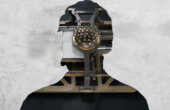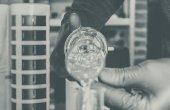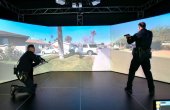Samuel Morse and the Quest for the Daguerreotype Portrait
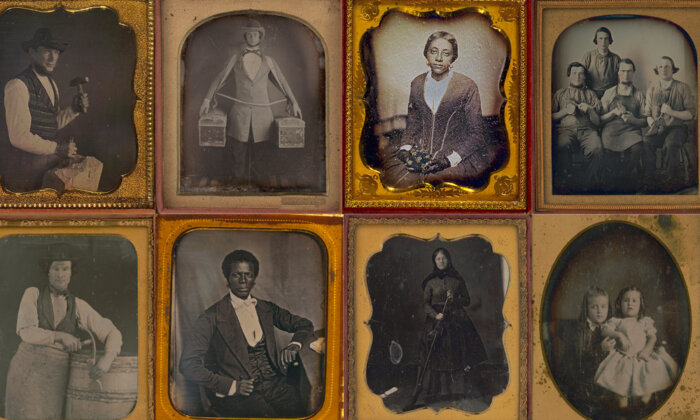
In January 1839, the French government announced a remarkable new invention by painter Louis Jacques-Mandé Daguerre: the daguerreotype, which captured an image on a chemically-treated, silvered copper plate, via the exposure of light. Samuel Morse — the inventor of the electro-magnetic telegraph and a significant 19th-century painter himself — happened to be in Paris promoting the telegraph, and was instantly taken with the daguerreotype. After all, Daguerre had done something he and many other experimenters in the United States and Europe had attempted to do in years prior but without success. Not to mention he was also concerned with how the daguerreotype might offer competition with the telegraph in a market constantly inundated with new, ever more fantastic, inventions.
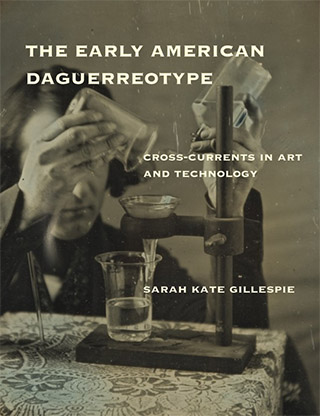
At the suggestion of Robert Walsh, the American counsel in Paris, Morse wrote to Daguerre sometime near the end of February 1839, requesting to view some actual daguerreotypes before they were shown to the public at large; he offered to show Daguerre his telegraph in return. On the appointed day, March 7, 1839, Morse and Daguerre met in Daguerre’s residence and so-called “Maison du Diorama” office at No. 5 rue des Marais. This building stood around the corner from the theatre that housed the Diorama itself, a theatrical experience in which patrons would watch a shifting landscape, and was part of a larger trend of interest in optical experiences throughout the early-mid nineteenth century.
Daguerre showed Morse several examples of his work, and Morse was able to examine these under a magnifying glass. It is near impossible to ascertain exactly which daguerreotypes Morse viewed while at Daguerre’s studio, but a letter he wrote following the meeting reveals that he was able to view a range of plates that demonstrated the medium’s abilities. One of these daguerreotypes was surely “Boulevard du Temple, eight o’clock in the morning,” a street scene showing the lower half of a ghostly man having his boots polished. Morse also noted an “interior view,” probably a still life, and described a scientific plate featuring a magnified view of a spider.
Despite his initial fears that the daguerreotype would divert attention from his telegraph, Morse instantly recognized that its marriage of the visual with the technological would be revolutionary, and he embraced its possibilities.
Morse was immediately taken with the new technology. Despite his initial fears that the daguerreotype would divert attention from his telegraph, he instantly recognized that its marriage of the visual with the technological would be revolutionary, and he embraced its possibilities. Immediately following his final encounter with Daguerre, Morse penned a letter to his brother Sidney in New York describing the plates. The most often-cited passage is one of the most striking, describing the street scene with the headless gentleman having his boots polished:
Objects moving are not impressed. The Boulevard, so constantly filled with a moving throng of pedestrians and carriages, was perfectly solitary. Except an individual who was having his boots brushed. His feet were compelled, of course, to be stationary for some time, one being on the box of the boot-black, the other on the ground. Consequently, his boots and legs are well defined, but he is without body or head because these were in motion.
Morse sailed home on the same ship that carried his letter, and his brother Sidney published this letter in his newspaper the New-York Observer on April 20, 1839, the first in a long series of articles the paper ran on daguerreotyping. While this publication was not the first report of the daguerreotype to appear in the United States, it was the first firsthand account of the new technology published in the country. It also appears to have been the most widely disseminated early account of daguerreotyping in America; it was reprinted in several other New York papers, in Philadelphia, New Orleans, and at least twice in Boston, in a matter of days.
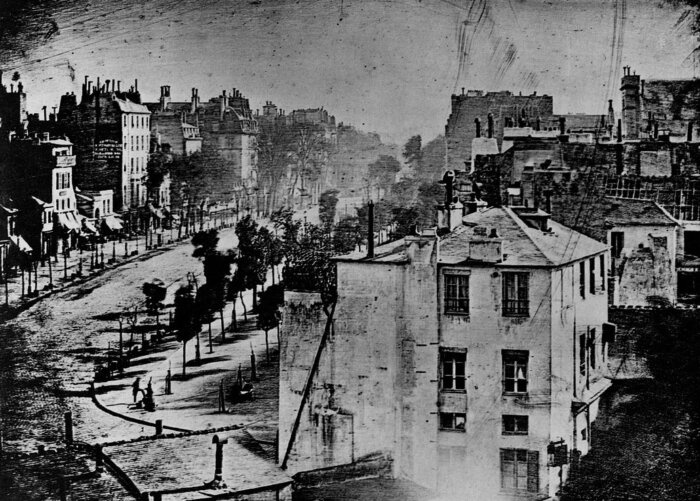
Rather than viewing the new medium as a potential threat to his telegraph, as he had in earlier correspondence, Morse begins to stress the medium’s potential in his letter, particularly in relation to art and portraiture. “The impressions of interior views are Rembrandt perfected,” Morse wrote, “No painting or engraving ever approached it.” This reference to an Old Master painter is quite telling. It signals that in addition to his recognition of the new medium’s potential to enter the American market as a technological force, Morse is also declaring, in a very public manner, that the daguerreotype is at least on par with (if not superior to) his long-chosen profession and passion, fine art.
He also sensed its commercial potential right away. Having been a successful portrait painter for many years, he immediately wondered whether the daguerreotype could be used for that purpose. Though Daguerre assured him that this was unlikely, Morse seemed to land upon the idea of exhibiting photographic portraits almost immediately.
Realizing that science was not his strong suit, Morse teamed up with chemist and medical doctor John William Draper. Both were professors at the University of the City of New York (now New York University), and the two joined forces in opening a portrait studio in the spring of 1840 — only the second of its kind in New York City — and later claimed they ran their business under a strict division of art and science, with each partner contributing in his area of expertise. Their collaboration was particularly representative of the interdisciplinary nature of the early daguerreotype, and of the kinds of strange bedfellows the new medium created (though perhaps not so strange in this case, given Morse’s long interest in technology). Sometime in spring of 1940, they opened a portrait studio on the roof of the New York City University building on Washington Square’s east side. The studio, described as a “primitive gallery,” consisted of “a turret room for a workshop, and a hastily constructed shed, with a glass roof, served for an operating room.” It was one of the first commercial portrait studios opened in the city.
Morse and Draper commenced taking portraits of their fellow New Yorkers. While it appears the joint studio was more a place of experimentation and exploration than a serious commercial venture (though neither was adverse to making a profit, particularly Morse), both men took the time to advertise their skill in the very new possibility of photographic portraiture commensurate with the studio’s opening. They did this, however, in very different ways. Draper sent a notice to The London and Edinburgh Philosophical Magazinein late March, claiming he had “succeeded during the winter in procuring portraits by the Daguerreotype.” The choice of this journal is telling: Draper is promoting his abilities to the European scientific community, from whom he desired acceptance and legitimacy. Morse, on the other hand, trumpeted his skill in a hometown newspaper, his brother’s New-York Observer:
Prof. Morse has succeeded in taking the miniature of his daughter, by improving upon the discovery of M. Daguerre. The picture is executed quite perfectly too, and as well delineated as the pictures of objects without life. Europeans have not succeeded in taking Daguerreotype likenesses of persons.
The language of this notice is very deliberate. Morse is already asserting the primacy of American daguerreotyping, by carefully noting that he had “improved upon” Daguerre’s discovery, and reminding his audience that Europeans had not yet been able to create a likeness of a living person. Though not an American invention, Morse is declaring the Americans have, in less than a year, made it better. Morse’s insistence on nationalizing his achievement is consistent with American attitudes regarding invention and technology at this time, and which Morse enthusiastically endorsed.
Considerably more information exists regarding the Morse-Draper studio than many other early daguerreotype studios, and a thorough understanding of their experience sheds light on the growing medium as it was taking shape in the United States. Many of the details Morse and Draper later recalled are seemingly trivial, such as they “made a charge to those who sat to us . . . as our experiments had put us to considerable expense,” but we also learn they charged $5 a picture, a fairly high price in the 1840s. Draper noted that the pair used “a four-inch lens, and then . . . an achromatic lens and plates, both French, which we imported,” confirming the continued scarcity of quality equipment in the States in these early years.
It seems that the high price tag initially made the daguerreotype prohibitive for many New Yorkers, keeping photographic portraiture, for that first summer at least, in the realm of the upper middle class.
They also reveal that the city’s elite, including Theodore Frelinghuysen, chancellor of the University and future vice-presidential candidate, were fascinated with the process and flocked to the studio. It seems that the high price tag initially made the daguerreotype prohibitive for many New Yorkers, keeping photographic portraiture, for that first summer at least, in the realm of the upper middle class. Regardless, such was the fascination with the daguerreotype that the pair had “all the business they could possibly attend to,” taking portraits on sunny days, and teaching others the practice of daguerreotyping on cloudy days.
The Morse-Draper studio’s emphasis on experimentation rather than serious profit is typical of many early American daguerreians. Almost all of those in the vanguard of early photography abandoned the medium within a few years of its introduction. They experimented, they explored, they improved upon the medium, but by and large they were not part of the enormous surge of commercial activity that characterized the American daguerreotype through the remainder of the 1840s and into the ’50s. Draper left the partnership in the fall of 1840, later stating he had to resume his teaching duties at the University. Morse, however, continued alone, taking a brief stab at the daguerreotype as a strictly commercial venture before he, too, quit photography for good, turning the whole of his attention back to the telegraph.
Sarah Kate Gillespie teaches courses in Civil War Era Studies and Art History at Gettysburg College, and is the author of “The Early American Daguerreotype.”
